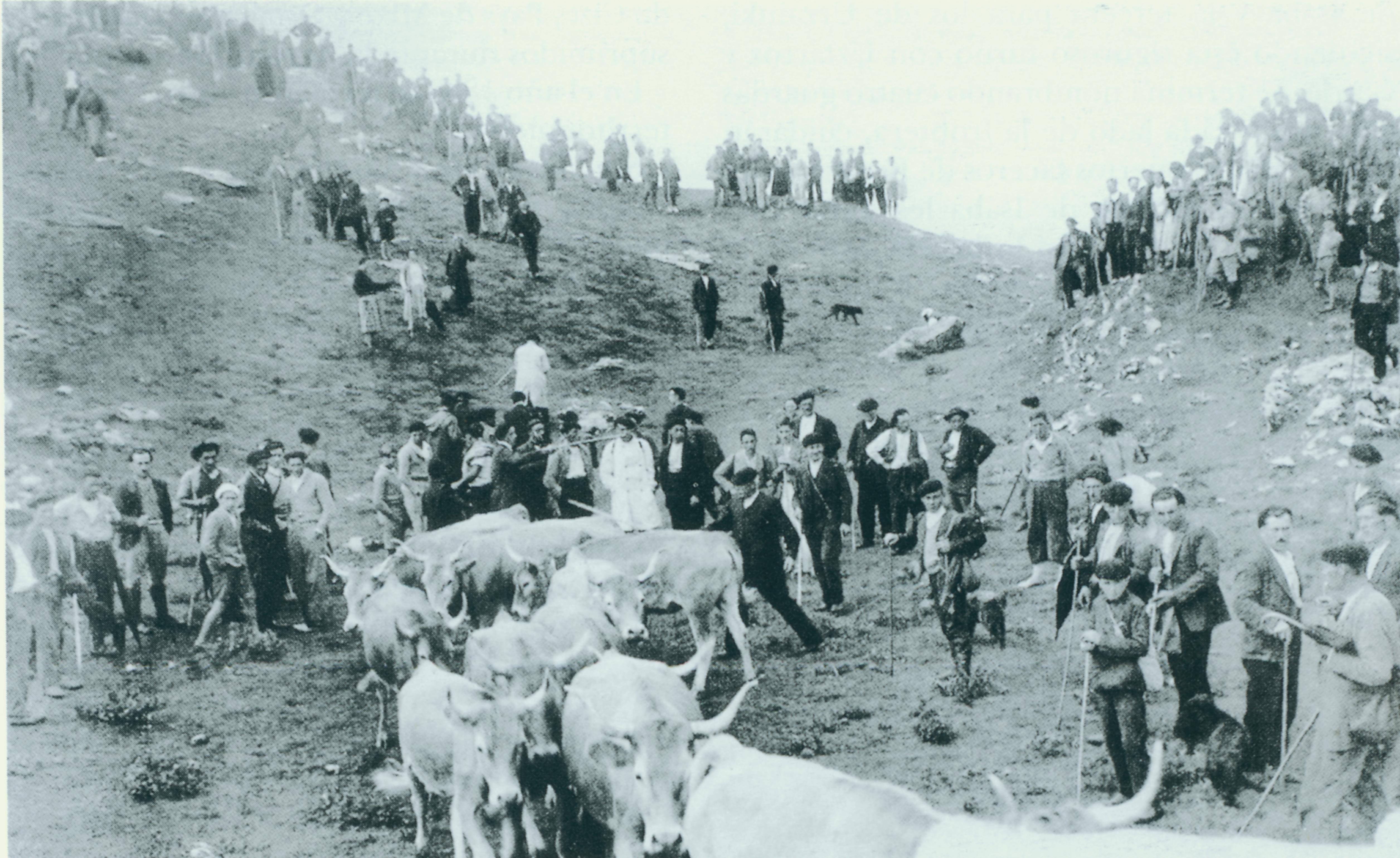Basque ethnography at a glance

Tribute of the Three Cows at the Stone of St Martin chasm. Roncal Valley, c. 1930. Ojanguren Archive.
On a map borderlines mark the limits between regions and states. They are drawn tracing an imaginary line that connects a series of boundary markers and separates native land from foreign. What seemingly might be a mere distinction between cultures, from an ethnographic point of view is not quite that simple. Borderland cultures are never clear-cut and offer a whole range of possibilities. Multiple signs and symbolic rituals originate in border areas and develop to acquire solid tactical and human dimensions.
The humanisation of the territory is an ancient fact that involves communities to interact with the natural landscapes they live in. Historical peoples have in the course of the times created exchange networks between adjoining regions across any type of border or imposed delimiting system. All of this has taken place through the transmission of a number of common cross-border cultural features. An example of this would be the cooperation agreements, known as facerías, established between the valleys of the Northern and Southern Basque Country in the Pyrenees for the use of pastureland. As the most representative among them, we shall mention the Tribute of the Three Cows paid over the centuries and nowadays a festivity of fraternity celebrated every year on 13 July by the villages of Roncal and their neighbours from the Béarnese valley of Baretous at the other side of the border.

Cromlech of Organbide in the Navarrese Pyrenees, used as a boundary marker. M.ª Victoria Portús. Labayru Fundazioa Photographic Archive.
The study of animal behaviour or ethology acknowledges humans have an innate tendency to occupy, define and defend their territory or ecological niche. However, and from a symbolic perspective, ethno-territorial frontier areas are defined as marginal spaces adopted by cross-border cultures. Such appropriation leads to their reinterpretation and the assimilation of political borders as an integral part of their ethnographic reality. Cultural groups on both sides of the Pyrenees do not see themselves as warring parties, yet they form a single global community that makes the enforced border into an inherent element of their own cultural construction. Not only does the presence of physical boundaries and border guards introduce a number of constraints, but it also leaves deep imprints, both material and non-material, central to their very identity. Consider, for instance, the role played in the local economy by smugglers, or the espadrille workers from the southern slope of the mountain range employed in the factories of Mauléon. In addition to the foregoing, and along with the coexistence of dissimilar cultural values as a source of demarcation, life in borderland societies is defined by large family and social networks built upon it.
These border communities have successfully transcended their particularities or singularities by means of instrumental rationality. That is to say, people who live on borderland have managed to create their own reality distancing themselves from any alien system of acculturation operating at a supralocal level. In other words, the border transforms itself into a point of convergence and divergence where cultures intermingle and dialectical relationships within the community become bound by territorial policy and a unique cultural reality.
Pablo M. Orduna – Etniker Navarre – Etniker Euskalerria Groups
Translated by Jaione Bilbao – Language Department – Labayru Fundazioa
Reference for further information: Livestock Farming and Shepherding, part of the Ethnographic Atlas of the Basque Country collection.

